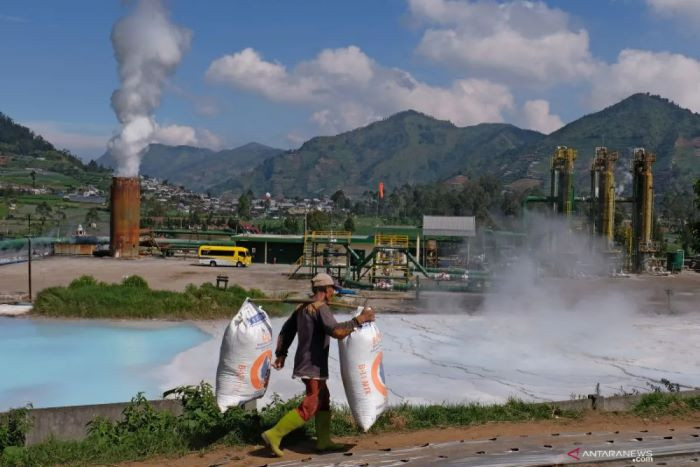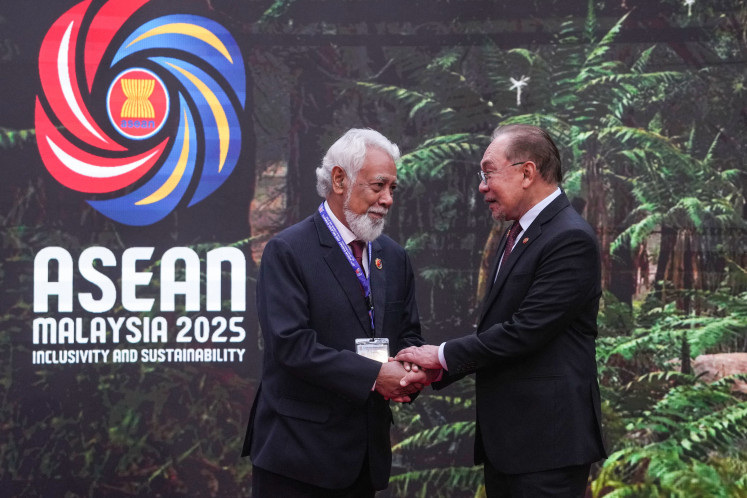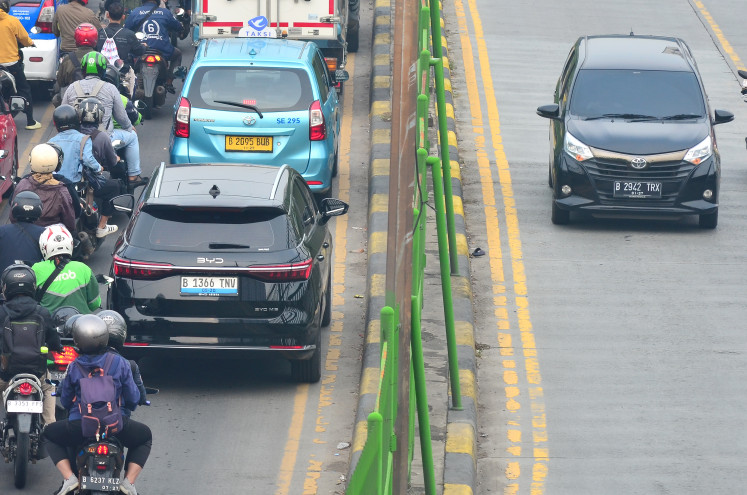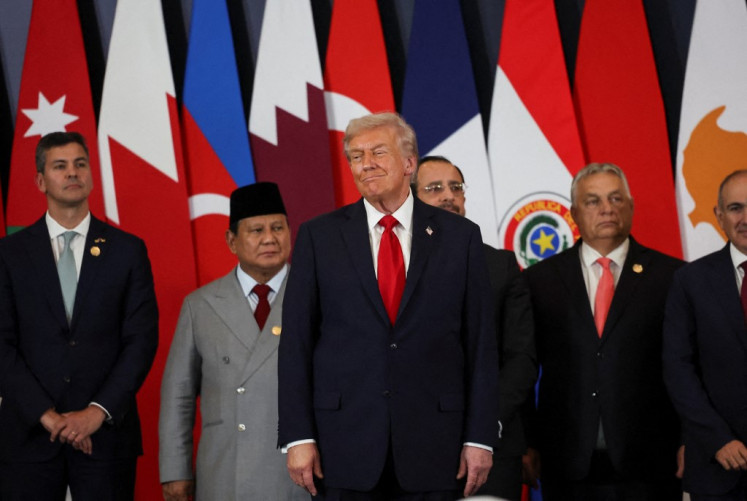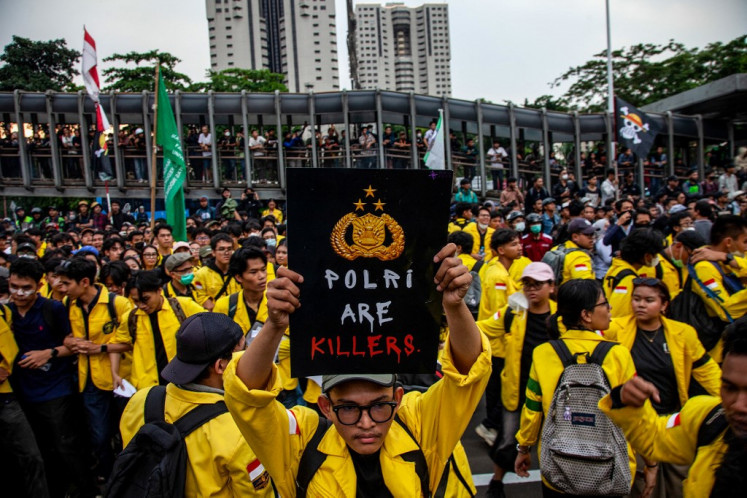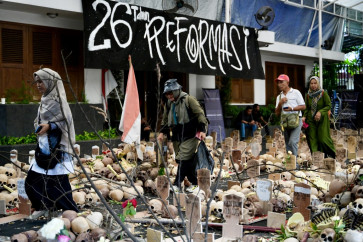Popular Reads
Top Results
Can't find what you're looking for?
View all search resultsPopular Reads
Top Results
Can't find what you're looking for?
View all search resultsThe May 1998 riots: Justice delayed is justice denied
The state’s persistent inaction on the Trisakti shooting and the riots of May 1998 has fostered public perceptions of impunity and abandonment.
Change text size
Gift Premium Articles
to Anyone
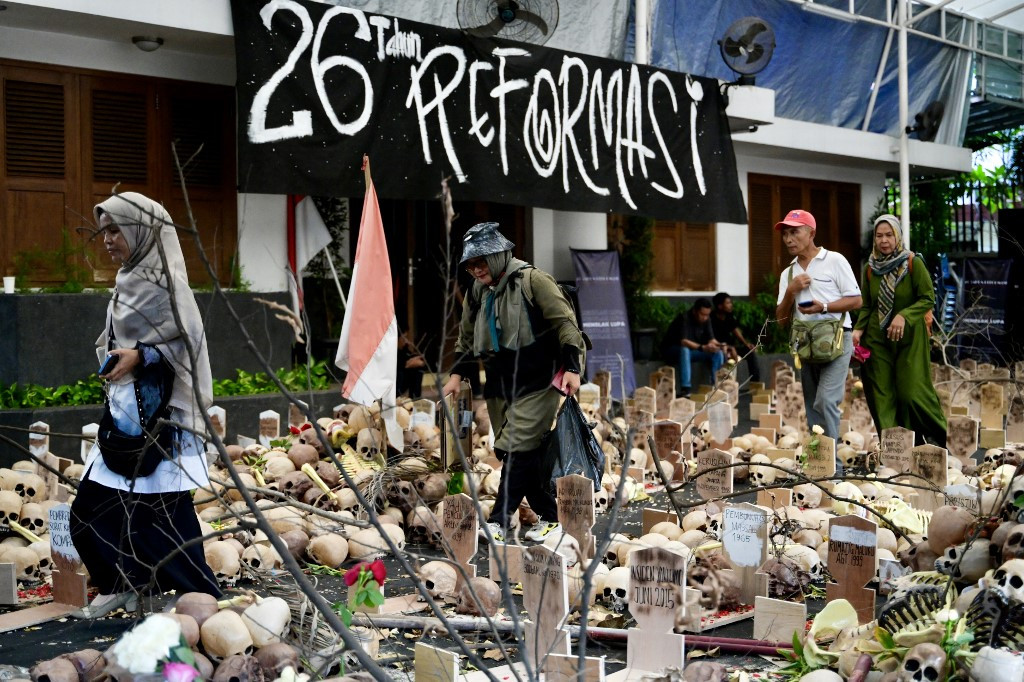 Visitors walk past skulls made from resin and grave markers recreated for an art installation in Jakarta on May 21, 2024 to commemorate 26 years of “reform struggle“ since the May 1998 Indonesia riots, in which hundreds of protesters were killed or disappeared in unrest that brought an end to the rule of former president Soeharto. (AFP/Bay Ismoyo)
Visitors walk past skulls made from resin and grave markers recreated for an art installation in Jakarta on May 21, 2024 to commemorate 26 years of “reform struggle“ since the May 1998 Indonesia riots, in which hundreds of protesters were killed or disappeared in unrest that brought an end to the rule of former president Soeharto. (AFP/Bay Ismoyo)
T
his month marks 27 years since the Trisakti tragedy on May 12 and the May riots that swept across Jakarta and several other cities throughout the following three days. These two interrelated events led to the loss of thousands of lives and the destruction of property across several cities. Yet, resolution and accountability remain shrouded in uncertainty, even though they constitute gross crimes against humanity.
In the Trisakti tragedy, four students from Trisakti University were shot to death during a rally for reform on the premises of their campus, which eventually led to the fall of president Soeharto. According to findings from the Joint Fact-Finding Team (TGPF), the incident began with a protest at 10 a.m. involving thousands of students, staff, and lecturers who gathered in the Trisakti University parking lot in West Jakarta, preparing for a long march to the House of Representatives building. However, their movement was blocked by police and military forces near the West Jakarta mayor's office.
By 5 p.m., most demonstrators had returned to campus. Suddenly, gunfire broke out, causing panic and chaos. Two students, Elang Mulya Lesmana and Hendriawan Sie, were shot while trying to enter the rectorate building. The TGPF stated that two more students, Heri Hartanto and Hafidin Royan, were killed when military troops opened fire from nearby rooftops while students gathered in an open area.
On the following day, May 13, mass riots erupted. These widespread riots, allegedly instigated by certain actors, targeted the ethnic Chinese community. The violence intensified after news of the student killings spread.
The riots, marked by mass looting, lasted until May 15 in Jakarta and other major cities such as Medan, Surabaya and Surakarta. Uncontrolled violence led to the destruction and burning of thousands of buildings, shops and homes. At Yogya Plaza shopping mall, East Jakarta, more than 400 people reportedly burned alive, trapped in the flames.
President BJ Habibie, who rose to power after Soeharto stepped down on May 21, 1998, then established the TGPF, which completed its report on Oct. 23. The report estimated that over 1,000 people died in the fires, hundreds were injured, several individuals were kidnapped and dozens of women, mostly of Chinese descent, were raped or sexually assaulted. Thousands of buildings were destroyed.
The TGPF issued eight recommendations, most of which were not implemented by the government, including recommendations on rehabilitation and compensation for victims and the formation of a military tribunal for high-ranking Armed Forces (ABRI) officers suspected of involvement or negligence.





